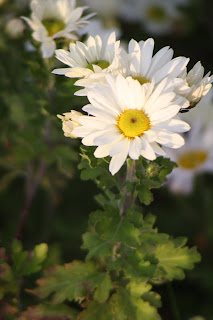
I've got this one spot on the north (shady) side of my house that has a habit of 'sinking' my African Boxwoods in record time...usually within 2 weeks! Even though I've tried amending the soil, digging out caliche for better drainage, lowering watering dramatically, it still doesn't work. Within a couple of weeks, the new replacement boxwood's leaves will first turn a dull green, then become super brittle to the point where brushing up against them will cause the leaves to drop.The middle 3 baby Boxwoods transplants/replacements you see here are all in varying degrees of misery. It's been said that veterinary medicine is so difficult because animals cannot speak our language to tell us what's wrong. Then how much more difficult is it to diagnose what's wrong with vegetative life?! lol...
In doing some research on the internet, I suspect I may have a case of phytophthora fungi roaming around in the soil, as I understand Boxwoods are very susceptible to this. The thing that's tricky about it is, even though the inclination is to water a plant whose leaves seem shriveled and dry, watering just serves to hasten the demise! Apparently the water helps the spores 'swim' more easily through the soil so they can attack the plant's roots. Bummer!
Worse yet, once a plant has been infected, they say 1) there's no way of curing the plant 2) it's really difficult if not impossible to decontaminate the soil from these particular fungi, so you can try replanting over and over, and even amend the soil, but eventually the spores will return and wreak havoc. In a desperate attempt to stop the demise of my fledgling plants, I've applied some cinnamon around the root area, due to its supposed anti-fungal properties. Corn-meal is also said to prevent fungus but it's probably better as a preventative than a cure. I may try it if I don't see any improvement.
Strangely, you may notice that I've got two Boxwoods in the same planting area (each at the bookends of a row, each getting the most sunlight, and thus probably drier soil) who still seem to be thriving. Perhaps the thick mud soil has prevented the disease from spreading to these two Boxwoods? Ah...the secret life of plants...





